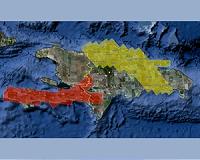| . |  |
. |
San Francisco, CA (SPX) Feb 09, 2010 A new study identifies earthquakes through July 2007 that have produced 100 of the strongest peak accelerations (PGA) and 100 of the strongest peak velocities (PGV) ever recorded. The threshold for the first list is acceleration of the ground exceeding 7.31 m/s2 (74% of gravity), while the threshold for the second is velocity exceeding 0.65 m/s. Crustal earthquakes dominate the lists. Exceptionally strong ground motions exceeding these levels have been observed on sites with the softest soils and sites with the hardest rock. Acceleration measures how fast speed (velocity) increases. "The size of these ground motions matter to the engineers as they design structures to resist earthquakes," said John Anderson of the Nevada Seismological Laboratory and Department of Geological and Engineering Sciences at the University of Nevada. "But ground motions that have not yet been recorded also matter. There may be a limit that earthquake motions will never exceeded. Although we expect to eventually record earthquake shaking stronger than what I report in this paper, those higher motions appear to be quite rare, and a motivation for this study was to help to constrain upper limits. Small earthquakes can generate exceptional peak accelerations (over 5 m/s2). This compilation includes earthquakes with magnitudes as small as 4.1. The smallest earthquake causing one of the 100 largest PGA on the list had a magnitude 4.8, and the smallest earthquake causing one of the 100 largest PGV was a magnitude 5.7. Of the 255 time histories identified in this study, 40 records have PGV exceeding 1.0 m/s. The largest PGV is 3.18 m/s, recorded on the hanging wall of the thrust fault during the Chi-Chi, Taiwan earthquake on September 20, 1999 (Magnitude 7.6). Also, 35 records have PGA greater than gravity (9.8 m/s2, or 1 g). The largest acceleration in this data set is about 23.8 m/s2 (about 2.4 times gravity), recorded on the hanging wall of the thrust fault during the Nahanni earthquake in northern Canada on December 23, 1985 (Magnitude 6.9). It has already been exceeded by a 2008 record from Japan with PGA that was greater than 4.1 g,, but that later record was not available when this data was compiled. While motions that large appear to be quite rare, with recent expansions of instruments, more records as large as those in the current top 100 are being obtained every year.
Share This Article With Planet Earth
Related Links Seismological Society of America Tectonic Science and News
 NASA Airborne Radar To Study Quake Faults in Haiti
NASA Airborne Radar To Study Quake Faults in HaitiPasadena CA (SPX) Feb 08, 2010 In response to the disaster in Haiti on Jan. 12, NASA has added a series of science overflights of earthquake faults in Haiti and the Dominican Republic on the island of Hispaniola to a previously scheduled three-week airborne radar campaign to Central America. NASA's Uninhabited Aerial Vehicle Synthetic Aperture Radar, or UAVSAR, left NASA's Dryden Flight Research Center in Edwards, Calif ... read more |
|
| The content herein, unless otherwise known to be public domain, are Copyright 1995-2010 - SpaceDaily. AFP and UPI Wire Stories are copyright Agence France-Presse and United Press International. ESA Portal Reports are copyright European Space Agency. All NASA sourced material is public domain. Additional copyrights may apply in whole or part to other bona fide parties. Advertising does not imply endorsement,agreement or approval of any opinions, statements or information provided by SpaceDaily on any Web page published or hosted by SpaceDaily. Privacy Statement |